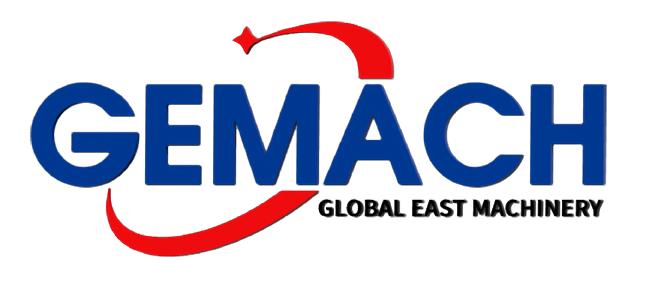Safety usage techniques and maintenance methods for disc harrows
Release time:
2024-10-23
The disc harrow is one of the more important tillage machines in plowing machinery. The disc harrow is mainly used for leveling wood chips after plowing, and it can also be used for shoveling soil, weeding, mixing fertilizers, shallow tilling after harvest, reducing stubble, loosening soil before sowing, and covering materials after aerial seeding. Sometimes it can also be used for soil and water conservation. Currently, the disc harrow is widely used in agricultural production. Let's learn about the safe usage techniques and maintenance methods of the disc harrow!
The disc harrow is one of the more important tillage machines in plowing machinery. The disc harrow is mainly used for wood chips and leveling after plowing, and can also be used for shoveling soil, weeding, mixing fertilizer, shallow tilling after harvest, reducing stubble, loosening soil before sowing, and covering materials after aerial seeding. Sometimes it can also be used for soil and water conservation. Currently, the disc harrow is widely used in agricultural production. Let's learn about the safe use technology and maintenance methods of the disc harrow!
1. Installation and Adjustment of the Disc Harrow
1. Installation
1) Clean all parts to be assembled, remove rust and oil stains, and place them according to type.
2) First set up the harrow group with equal spacing between each harrow within an allowable range of 8 mm.
3) On a flat surface, place the harrow frame on a special support stand, then install each harrow group, deep tillage ring, transport ring, and other components in sequence.
4) Assemble the hydraulic or pneumatic system.
5) Adjust after assembly is complete.
2. Debugging
The machine's adjustment must be done manually to check the convenience, flexibility, and correctness of movement of all movable parts. For hydraulic or pneumatic machinery adjustments, a homemade hydraulic or pneumatic adjustment table can be used to check the convenience, flexibility, and correctness of action of hydraulic or pneumatic mechanisms. Alternatively, it can be installed on a tractor connected to a hydraulic or pneumatic system to check their respective adjustment states. Debugging requirements:
1) The harrow should be level.
2) The depth adjustment of the harrow teeth should be flexible and convenient.
3) The landing gear should operate flexibly and effectively with smooth movements.
2. Maintenance of the Disc Harrow
1. Daily Maintenance
1) After each work shift, clean mud and grass rolls from the harrows, scrapers, deep tillage wheels etc.
2) Check all fastening bolts for tightness; if loose tighten them.
3) Lubricate bearings on harrow teeth shafts, deep tillage wheels, transport wheels and adjusting screws with grease or oil once or twice per shift to ensure smooth operation.
4) Check the gap between scraper blades and harrow teeth for any friction issues.
2. Quarterly Maintenance
(1) At the end of each quarter's work period inspect all parts for maintenance. Check wear or damage on harrow blades; if beyond specifications repair or replace promptly.
(2) Lubricate all lubrication points; apply anti-rust oil on exposed screw rods and hanging pins.
(3) Keep the entire harrow clean; apply anti-rust oil on its surface; replace grease inside bearings; add lubricating oil to all lubricated parts; apply oil for rust prevention on the harrows.
(3). Long-term Parking Maintenance
(1) When parking the disc harrow for an extended period use wooden boards under it. Apply anti-rust oil on hydraulic or pneumatic joints; wrap with plastic wrap to prevent damage from bumps; park in a higher location covered with thin sheets to avoid rain exposure.
(2) Lubrication points include: bearing shafts of tooth discs , deep tillage wheels , transport wheels etc .
(3). Use of Disc Harrows
(1). Before use check that all fastening bolts and nuts are tight; tighten if loose . (2). The thickness at blade edges should be less than .5 , edge damage length less than15mm , no more than three damages per blade edge , square shaft should be flat without damage .
(3). The nut at front end of square shaft must be tightened & locked ; blade pieces must not loosen . Otherwise inner hole will round out due to square shaft .
(4). During work repairing , checking , adjusting materials while using is strictly prohibited . Sudden turns & reversing while using tractor’s rake bucket are not allowed ; raise rake bucket when turning & reversing before proceeding .
(5). During work choose appropriate raking method based on soil quality , plot size , shape & agricultural technical requirements etc . Commonly used method is raking method suitable for raking & shallow tilling ; raking method applies post-field cultivation.
Previous
Previous:
Related News
How is a deep loosening machine maintained?
2024-09-18
Introduction to rotary tillers
2024-06-12
Contact Phone:86-13465191540
whatsapp:+86-13465191540
E-mail:Sophia@Gemach-sd.com
Address: Building G, Dingliang Industrial Park, Qihe County, Dezhou City, Shandong Province
Scan the two-dimensional code





